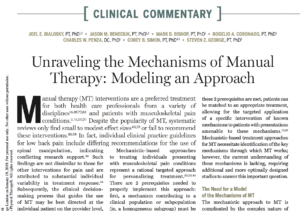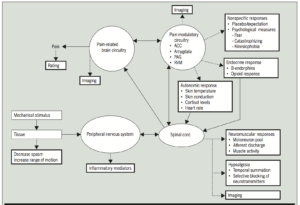by Mitch Hauschildt, MA, ATC, CSCS
Recently I read an article discussing the underlying mechanisms of manual therapy. It laid out a very interesting model that goes against what most of us were trained to believe that we are accomplishing with our manual therapies. You can read that article here if you are interested in diving in deep.
Most of us were taught a mechanical model of manual therapy. We were taught that when we perform a massage, we are changing the structure of the muscle and/or fascial system. When we mobilize a joint, we are changing the size or shape of the joint capsule. When we physically stretch a muscle, we are changing the length of the muscle. And, when we adjust a segment of the body, we are moving it to a more optimal position.
The problem is that the research doesn’t support these traditional constructs very well. And, these models for manual therapy don’t consider the nervous system at all. They are treating the meat and connective tissue without considering the person attached to that tissue.
“We believe that research focusing on individual mechanisms in isolation will always fall short of providing meaningful insight, because Manual Therapy is a complex intervention involving multiple interactions of complimentary mechanisms.”
The authors of the clinical commentary propose that when mechanical stimulus is applied to tissue that a series of neurophysiological responses takes place. That model is shown below and looks quite complex (which it ultimately is), but the big take home from the graphic is that we can never underestimate the involvement and power of the nervous system.

Some highlights of their research that I found interesting are:
- There is a well-known pain relief effect that comes with Manual Therapy, but it is transient in nature. Meaning, that what have a somewhat narrow window of reduced pain to work within following our manual techniques to make longer lasting changes.
- Following a high-thrust maneuver, there is a hypoalgesia (pain relieving) effect, as well as a changes in multiple structures throughout the central nervous system and it’s related structures both up and downstream.
- Many of the nervous system effects that are seen from Manual Therapy are not very well understood.
- Provider expectations seems to have a significant effect on patient outcomes. The confidence that we instill in our patients is extremely important for improving outcomes.
The biggest goal for this discussion is to understand some of the underlying principles and mechanisms with our manual therapies. At the end of the day, what matters is what works, but if we can better understand why it works, then we can evolve and improve our interventions over time.


Leave a Reply